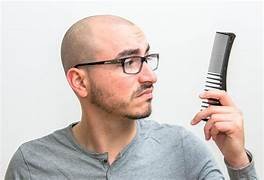Hair Loss in Men: Figuring out Causes and Exploring Treatment Alternatives

Men often worry about losing their hair; millions of people worldwide are affected. Although many times thought of as a normal part of aging, there are several reasons why people lose their hair, from heredity to lifestyle choices. Men can take charge of preserving good hair by learning the fundamental causes of hair loss and investigating potential treatments.
Here on this blog, we will explore the complexities of male hair loss, identifying its causes and going over possible treatments.
Causes of Hair Loss
The most frequent causes of hair loss in men are:
- Androgenetic alopecia, or male pattern baldness: Men who lose hair most often have this inherited disorder. Usually beginning in the late teens or early twenties, it is typified by a receding hairline and thinning hair on the crown.
- Hormonal imbalances: Hair loss may be aggravated by fluctuations in hormone levels, especially dihydrotestosterone (DHT). Hair follicles can shrink as a result of the testosterone byproduct DHT, which causes hair to thin and eventually fall out.
- Medical issues: Men who have thyroid problems, autoimmune disorders, or scalp infections may lose their hair.
- Drugs: As a side effect, some drugs—such as those for depression, high blood pressure, and cancer—can cause hair loss.
- Stress: A kind of hair loss known as telogen effluvium, in which hair follicles go into a resting phase too soon and lose more, can be brought on by physical or emotional stress.
Treatment Options
While hair loss can be upsetting, there are a number of ways to help slow down the process and encourage hair regrowth:
- Drugs: Male pattern baldness is frequently treated with FDA-approved drugs including finasteride (Propecia) and minoxidil (Rogaine). Finasteride is an oral drug that inhibits DHT synthesis; minoxidil is a topical solution that can be sprayed directly to the scalp to promote hair growth.
- Low-level laser therapy (LLLT): Using focused light energy, LLLT devices—like laser combs or caps—stir hair follicles and encourage hair growth.
- Platelet-rich plasma (PRP) therapy: A concentrated solution of platelets taken from the patient's blood is injected into the scalp during platelet-rich plasma (PRP) therapy to promote the growth of hair follicles.
- Hair transplantation: Restoring hair density can be accomplished by hair transplantation in situations of severe hair loss. In the process, bald or thinning patches of the scalp receive transplants of hair follicles from a donor location.
CONCLUSION
Men frequently worry about hair loss, but it doesn't have to be inevitable. Men can actively protect their hair and their self-esteem by learning the fundamental reasons of hair loss and looking into potential treatments.
Regardless of their choice—medications, laser therapy, PRP therapy, or hair transplant surgery—men should speak with a licensed medical professional to choose the best course of action based on their unique requirements and preferences. Men can successfully treat hair loss and proudly restore a full head of hair with the correct strategy.
What's Your Reaction?


















